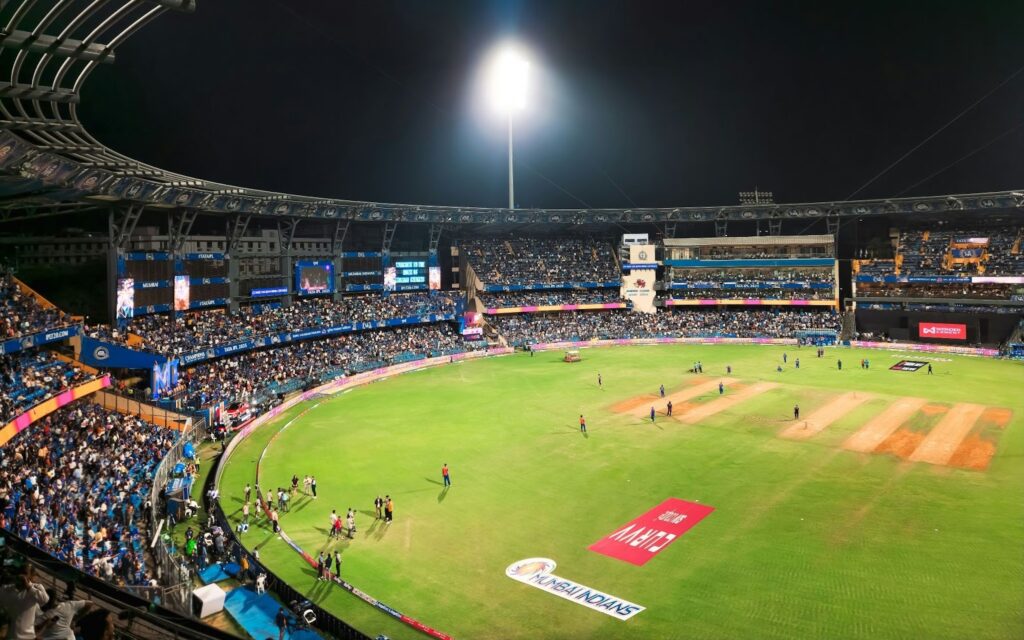Cricket is a game where no two matches are alike, even when the teams are the same. Beyond player skill and strategy, one invisible yet decisive factor shapes every delivery, every shot and often the match result itself — the pitch. It’s the heartbeat of the contest, which dictates how the ball behaves, how batters respond and how bowlers craft their spells. A dusty turner in Chennai can turn a batting line-up into helpless spectators, while a green seamer in Wellington can make even the best players look ordinary.
Pitch conditions vary dramatically across the cricketing world, and these differences influence how teams prepare, which players they select and how they execute their plans. Even formats like T20, which often focus on power-hitting, feel the pitch’s impact deeply. Just like the unpredictable dynamics of this website, where outcomes shift with subtle changes in pace and timing, the surface beneath the players’ feet can change everything in a cricket match.
Types of Pitches and Their Playing Styles
Pitch types generally fall into three main categories, each creating a distinct style of play and demanding different skills from teams.
Fast and Bouncy
These surfaces favour pace bowlers by offering sharp bounce and pace off the deck. Batters should adapt quickly to short-pitched deliveries and unpredictable lift, which makes shot selection critical. Such conditions also reward aggressive stroke play when the ball comes nicely onto the bat.
Slow and Low
These pitches absorb pace, which causes the ball to stay low and makes stroke play harder. Bowlers should rely more on accuracy, variation and subtle changes in length.
Key traits of slow and low surfaces:
- Bounce is minimal and often uneven
- Shot timing becomes harder for batters
- Spinners gain more control and effectiveness
- Matches often become battles of patience.
Teams playing on such surfaces should show discipline. Batters need to rotate strike rather than aim for boundaries, and bowlers focus on building pressure through dot balls and tight lines.
Dusty and Turning
These surfaces are typically found in subcontinental conditions and start favouring spinners from early on. The dry pitch breaks down quickly, which creates cracks and rough patches that help the ball spin. Batters with strong footwork and defensive technique tend to succeed, while bowlers who can exploit drift and dip thrive.
Country-Wise Pitch Characteristics and Their Effects
Each major cricketing nation offers a unique pitch profile shaped by its climate, soil and preparation methods. Understanding these differences is crucial for touring teams and often determines how matches unfold.
Australia — Pace and Bounce Dominate
Australian pitches are known for pace and true bounce, which rewards fast bowlers who can hit the deck hard. Batters enjoy even carry, but any lapse in technique is punished. Matches here often favour teams with strong fast-bowling arsenals and aggressive top-order batters.
India — A Paradise for Spinners
Indian pitches are dry, dusty, and tailor-made for spin, especially as matches progress. Seamers play a supporting role, while quality spinners often become match-winners. Batters with the patience to build long innings and the skill to play spin well are vital for success.
England — Swing Heaven
Cool, damp conditions and green pitches make England the home of swing bowling. Seamers thrive, and teams often rely on bowlers who can move the ball both ways. Batters need a solid defensive technique and a willingness to leave deliveries outside off-stump.
South Africa — Balanced Yet Challenging Tracks
South African surfaces offer a balance of pace, bounce and movement. Both batters and bowlers can succeed if they execute well. Teams need variety in their attacks, and batters should combine technique with aggression to post competitive totals.
New Zealand — Seam-Friendly and Unpredictable
New Zealand pitches can vary greatly but often favour seamers, especially in overcast conditions. Ball movement, both through the air and off the pitch, tests technique and patience.
Typical traits of New Zealand surfaces:
- Seam movement throughout the match
- Variable pace and bounce across venues
- Matches often decided by disciplined bowling.
Teams that bowl consistent lines and lengths here often dominate. Batters should play late and close to the body to succeed.
UAE — Slow and Low Neutral Venues
Pitches in the UAE tend to be flat and slow, with little assistance for pacers. Spin becomes crucial, particularly in the middle overs of limited-overs matches. Batters capable of building innings and accelerating late tend to shape the outcome.
How Teams Adapt to Varying Pitch Conditions
Adapting to local conditions is often what distinguishes great teams from good ones. Success hinges on preparation, selection and strategy.
Squad Selection and Bowling Attack Balance
Teams tailor their bowling attacks to the surface. Fast and bouncy tracks demand multiple quicks, while spin-friendly pitches require at least two frontline spinners. All-rounders also become key in balancing the side.
Batting Technique Adjustments
Batters modify their approach based on the pitch. On swinging tracks, leaving the ball becomes a vital skill, while subcontinental conditions require decisive footwork against spin. Players who adjust quickly often become match-winners.

Strategic Decisions: Toss, Batting First or Chasing
Captains use pitch behaviour to guide decisions at the toss. Batting first is often preferred on dry pitches that deteriorate, while bowling first may suit conditions likely to assist seamers early on.
Real-World Examples of Pitch Impacting Results
Pitch conditions have repeatedly shaped cricket’s biggest matches:
- 2019 Ashes at Headingley — England’s seamers exploited overcast conditions to script a remarkable comeback.
- 2017 Pune Test — Australia stunned India as Steve O’Keefe dominated on a turning track.
- 2005 Johannesburg Test — South Africa’s pacers used bounce to dismantle India.
- 2021 WTC Final — New Zealand’s seam attack thrived in swinging Southampton conditions.
- 2023 Ahmedabad Test — India’s spinners overwhelmed Australia on a crumbling surface.
Each example shows how the surface influenced the match’s character, which forced teams to rethink their plans and rely on different strengths.
Wrap-Up: The Crucial Role of Pitches in Cricket
Pitch conditions are the silent force behind every cricket match. They decide which bowlers thrive, how batters build their innings and which tactics captains trust. Success often depends on how well teams read and respond to these variations. From the raw pace of Perth to the dusty turns of Chennai, the story of every contest begins beneath the players’ feet — in the 22 yards that truly shape the entire game.
